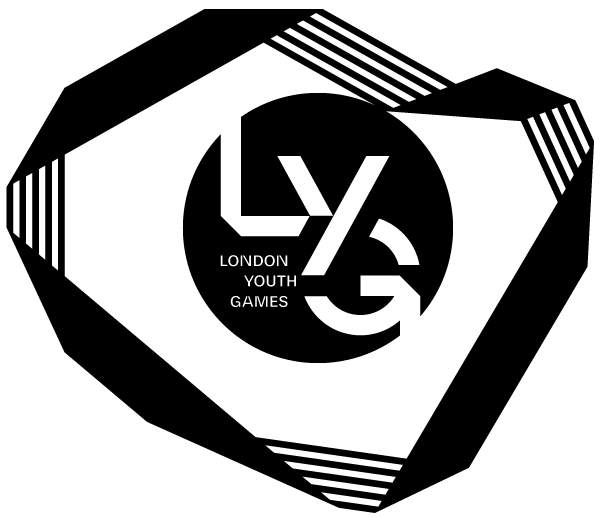History of the London Youth Games
Every Young Londoners Games
Our history
The London Youth Games has a rich and diverse history, stretching back decades and featuring some of the most influential figures in British sport of the last 47 years, royalty, senior political figures and over 1.9 million Londoners. Whilst similar youth events across the UK have come and gone, the London Youth Games has not only survived since launching in 1977, it has thrived. As one of the world’s leading annual youth sports events, the London Youth Games has continually evolved and progressed driving participation in school and community sport in the nation’s capital.
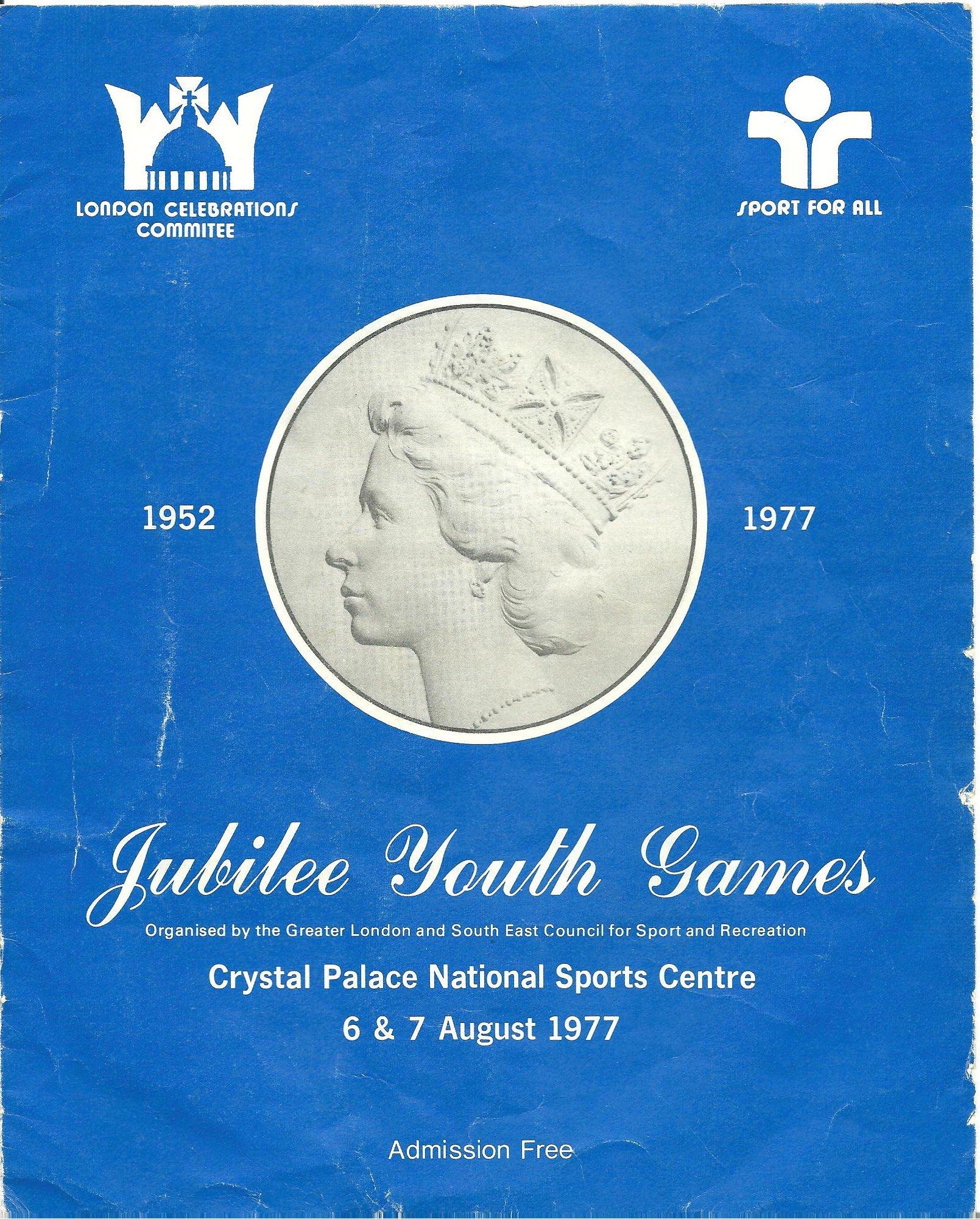
THE ORIGINS
Ahead of Queen Elizabeth II’s Silver Jubilee in 1977, the London Celebrations Committee (LCC) was created to deliver special events in London to mark the occasion. It featured several luminaries of the day including Lord Dogheda, Lord Sterling, Businessman and Events Organiser Neville Labovitch, Theatre impresario Lord Bernard Delfont and sports personality Jimmy Hill.
Hill, a famed figure from football and broadcasting, was given responsibility for sporting activities and he turned to the Sports Council, whom he was also a member and the task landed on the desk of Head of Sports Development for London and South East, Roger Bottomley. After several meetings with colleagues, Bottomley came up with two ambitious proposals designed to inspire participation and involve youth in 1977. The first was a Jubilee Sport For All event at Hyde Park, including 20 or more competitive sports including elite events in rowing, canoeing, cycling and show jumping and active public participation.
The second was London Jubilee Games, a youth multi-sport inter-borough competition involving all of London’s boroughs – the blueprint for the event that survives to this day. Bottomley successfully persuaded the London Boroughs and Governing Bodies of Sport to support the event and the LCC to provide financial support. Each sport and borough agreed that the Games would support Sports Development programmes and there were a series of local preliminary and selection events held in the lead up the finals.
There was a strong emphasis on the finals being as big as possible and the Crystal Palace National Sports Centre was chosen as the site. It was the first time the facilities at the stadium, the centre and the surrounding park had been used for a large-scale multi-sport event. The event took place on Saturday 6 and Sunday 7 August and the inaugural sports were athletics, badminton, basketball, cycling, fencing, football, gymnastics, judo, karate, lawn tennis, netball, skiing, squash, swimming and diving, volleyball, and weightlifting. “It is hoped the London Jubilee Games will lay the foundations for similar activities in future years.” wrote Jimmy Hill in the event programme.
The weekend was a huge success with thousands taking part. At the closing ceremony in the stadium, the crowd were entertained by displays from Chinese Dragon Dance troupe before the London Borough of Havering were crowned overall winners and collected the Jubilee Trophy.
1978-1989
There was no original intention for London Jubilee Games to be an annual event. But with enthusiasm from the 1977 staging still widespread among leaders in London’s local governments and the London sport community, in 1978 it was decided to revive it as London Youth Games in 1979. The task was delegated to Anthony Allan CBE, then Chief Executive of London Borough of Hammersmith and Fulham Council. Allan consulted closely with Roger Bottomley, the driving force behind the first Games in 1977. They followed the same multi-sport inter-borough model and Crystal Palace National Sports Centre became established as the spiritual home of the event.
The event received full support by all London boroughs as a key component of sports development in each area of London. The sports continued to be delivered by NGBs and included traditional sports like athletics, football, swimming, but also equestrian, darts and skiing. Olympic swimming gold medallist Duncan Goodhew was a prominent supporter of the London Youth Games during this period.
The Sports Development department at London Borough of Hammersmith and Fulham were responsible for leading on delivery of the Games until the mid 1980s. In 1985, London Youth Games Ltd was is created to cater for the growth and complexity of the organisation dedicated to running the London Youth Games. Former Leader of London Borough of Hackney Council Anthony Kendall OBE began a 30 year association with the Games with two stints as Chair 1985-1990 and 2007-2014.
During this time, London Youth Games began to broaden its programme beyond finals weekend. In 1986, a water sports regatta was introduced as the Royal Albert and Victoria Docks. To celebrate its 10th anniversary, the 1987 London Youth Games featured in cycling’s Milk Race and the cross-country championships at Hampstead Heath were introduced to the Games programme.
1990–1999
In 1994, BAA Heathrow became the first title sponsor of the London Youth Games which were renamed ‘ The London Heathrow Youth Games ‘, the sponsorship lasted for over a decade and gave the event financial stability through to the new millennium. The Mini Games event for Londoners under the age of 11 was introduced, taking place on the Thursday before the Weekend Finals, providing a multi-sport opportunity for thousands of Primary Aged young people. The Indoor Cricket Cup was created in 1996 with the finals at Lord’s. A then-record 20,000 children took part in the 1998 London Youth Games.
The regatta was revamped in 1999 with the introduction of separate competitions in canoeing, sailing and rowing. The event provided an early experience of competitive sport for many athletes who went to succeed at the highest level including multiple Olympic champion Mo Farah, Olympic cycling god medallist Joanna Rowsell Sand, Olympic 400m gold medallist Christine Ohuruogu, four-times Winter Olympian Chemmy Alcott, Manchester United and England footballer Rio Ferdinand. Farah finished only 9th in the 1994 cross country under 11s race.
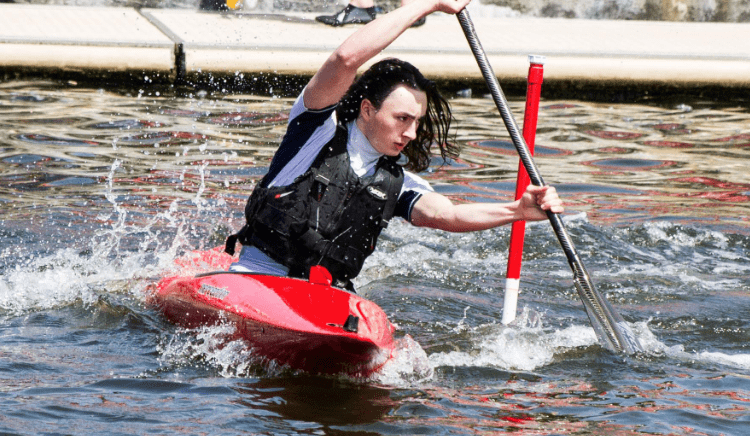
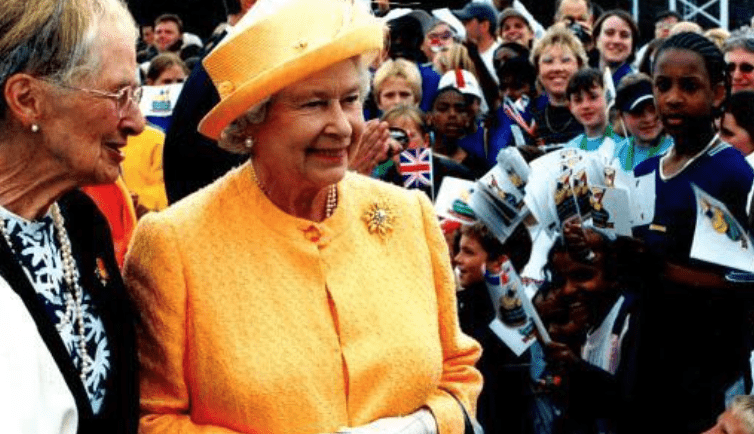
2000–2009
The Queen, accompanied by her husband Prince Philip, Duke of Edinburgh, visited the London Youth Games Mini Games at Crystal Palace on 4 July as part of her Golden Jubilee Tour in 2002. She watched a relay race and presented winners medals. Of her visit, Camden’s Borough Team Organiser John Mann said: “Despite the most stringent security measures, as the Queen walked into the main sports hall during the athletics competition she was engulfed by kids who completely overan the bodyguards and minders. They seemed absolutely horrified but she didn’t appear at all concerned and seemed to genuinely enjoy the occasion!”
In 2007, long-time Chair and pioneer of women’s cycling Eileen Gray CBE stepped down from the board after a 17-year association with London Youth Games. She was one of the first women to represent Great Britain in cycling in 1946 and was a driving force behind women’s cycling being introduced to the Olympic programme in 1984.
The 2004 London Youth Games are launched by former boxing champion Michael Watson and showcase the London 2012 bid during the launch and at the finals weekend. BAA Heathrow’s sponsorship of the Games ends in 2005 and a new public sector funding secured the London Youth Games’ future with long-term funding from Sport England National Lottery and the Greater London Authority. Balfour Beatty announced six-year association with the London Youth Games in 2006. They signed as a title sponsor until 2013 and the London Youth Games are renamed ‘The Balfour Beatty London Youth Games’.
Former participant and rising start of British long-distance running Mo Farah lit the games torch at the opening ceremony of the 2007 London Youth Games.
In 2009, the London Youth Games celebrates the 500,000th competitor in its history. The London Youth Games also gets its first patron with former competitor, Chicago Bulls and GB basketball captain Luol Deng. ‘GamesForce’, the London Youth Games volunteer programme is launched, offering hundreds of opportunities for young people 16-25 to train, gain experience and develop skills in sport, event co-ordination and media through the events programme. The London Youth Games Hall of Fame is launched with six former participants inducted, consisting of athletics legends Steve Backley, Linford Christie, Christine Ohuruogu, Paralympic swimmer Dervis Konuralp, NBA star Luol Deng and Olympic rowing champion Mark Hunter.
2010-2019
In 2010, the London Youth Games enjoyed its biggest year to date with a record 50,000 competitors and became the largest annual youth sports event in Europe. Olympic 400m runner Christine Ohuruogu was the 2010 London Youth Games patron and she was joined by the then London Mayor and future UK Prime Minister Boris Johnson to light the flame at the Opening Ceremony for Finals Weekend. Zoe Smith, a Greenwich gymnast who only discovered her talent for weightlifting when asked to make up the team for the London Youth Games, won a bronze medal at the Commonwealth Games in Delhi just three months after representing her borough at the London Youth Games.
2011 was another record year for the London Youth Games, as over 71,000 youngsters compete across 30 sports, with Richmond taking home the Jubilee Trophy for the first time. England women’s footballer Rachel Yankey was the patron of that year’s Games. Also in 2011, London Youth Games successfully hosted a London School Games pilot event ahead of its official launch the following year.
With London 2012 fever gripping the country, London Youth Games introduced a whole new raft of schools competitions in line with the national School Games pathway and hosted the inaugural finals at Crystal Palace in March. Hounslow became the first ever winners of the Schools Shield. BMX was another new introduction to the London Youth Games. Games alumni Zoe Smith and David Weir were joint patrons for a record-breaking year at the London Youth Games that saw a record 104,463 take part. Croydon were crowned winners of the Jubilee Trophy for the first time in 18 years.
44 former London Youth Games participants competed in the 2012 Olympics and 2012 Paralympics, contributing 14 medals to Team GB including gold medals for track athletes Mo Farah and David Weir, cyclists Bradley Wiggins and Joanna Rowsell Sand and rower Naomi Riches.
The London Youth Games celebrated a huge landmark in 2014 with its one millionth competitor. A special reception was held at the Houses of Parliament to recognise the London coaches connected with London Youth Games who had made such a massive contribution to community sports participation across London. In 2015, Dance was introduced to the London Youth Games with the inaugural competition taking place at the Copper Box Arena, former London Youth Games gymnastics competitor Warren Russell of Diversity was a member of the judging panel.
In 2017, London Youth Games celebrated its 40th anniversary with its #40stories40years campaign. Then in 2018, London Youth Games reached 1.5million all-time participants. In 2019, London Youth Games announced an exciting new partnership with Nike. On the announcement, David Carmont Vice President for Nike UK&IRE said, “We know that young Londoners have an unbeatable spirit and attitude that really sets the tone for this city. But we know that they now need sport in their life more than ever.”
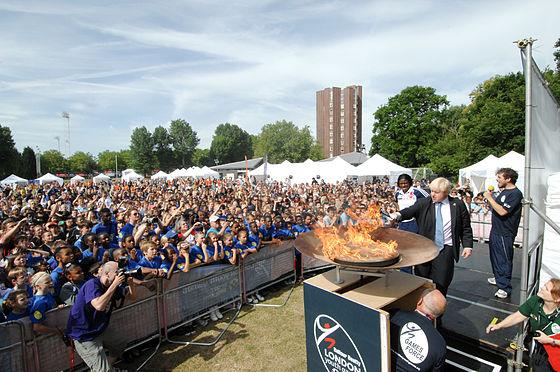
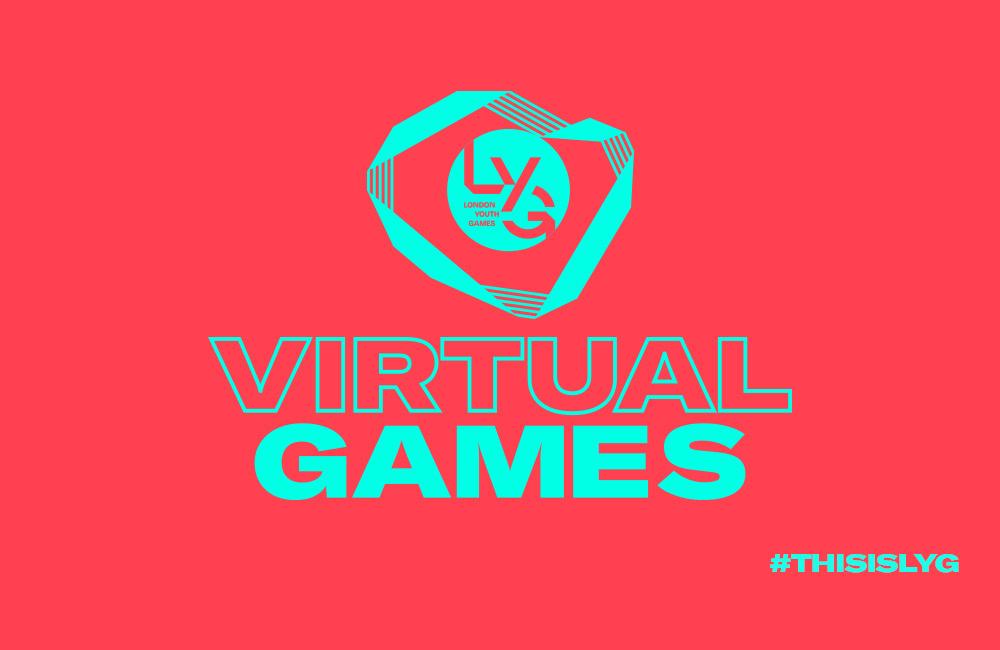
2020-present
For the first time since 1978, the London Youth Games programme did not take place due to the Covid-19 pandemic. In response and to help young Londoners stay active, London Youth Games launches the Virtual Games. Four weeks of sporting challenges set by young Londoners with virtual participation was an innovative undertaking by the organisation. But the response was huge with an incredible 40,522 entries and engagement from all 33 Boroughs. Camden emerged as the Virtual London Youth Games winners. In October 2020, London Youth Games announced the creation of ‘LYG33’, a youth ambassador programme designed to empower young Londoners to influence the future of London Youth Games. Throughout the pandemic, London Youth Games continue to deliver virtual activities to keep young Londoners active and engaged in sport. These include virtual Cross Country and Dance events, a series of fitness challenges for London schools, and the Virtual Inclusive Games – an eight-week competition with challenges set by young disabled Londoners. Virtual activities organised by London Youth Games attract over 80,000 entries in the third lockdown.
